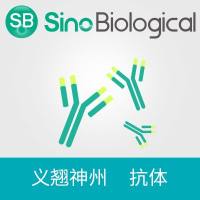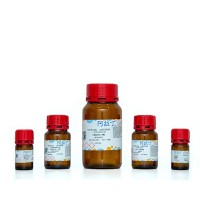Southern Blotting(Fred Hutchinson Cancer Research Cente
互联网
Southern Blotting: DNA Transfer
1. Depurination of DNA fragments: Wash gel in 0.25 M HCl 5' (small gels), 7' (large gels)2. Denaturation: Wash gel in (0.5 M NaOH, 1.5 M NaCl) for 20' (small) to 30' (large).
3. Neutralization: Wash in (0.5 M Tris pH 7.0, 3.0 M NaCl) for 20' (small) to 30' (large).
4. Cut nylon membrane (MSI 0.45 micron #N04HY00010) and several pieces of blotting (e.g. Schleicher and Schuell GB002) paper to the same size as the gel. Wet the nylon with dH20, then soak in 5x SSC.
5. Assemble sandwich:
a. Large sheet of plastic wrap
e. One piece blot paper soaked in 5x SSC
f. 10-15 pieces of dry blot paper
h. Wrap whole sandwich in the plastic wrap
i. Place glass plate and weight on top and let transfer %26gt;3 hr.
6. Crosslink after blotting.
OR
1. Set up a standard alkaline Southern transfer onto a nylon membrane with 0.4 M NaOH, 0.6 M NaCl (for positively charged membranes) or 0.25 M NaOH, 1.5 M NaCl (for uncharged membrane). Transfer %26gt;3 hours.
2. Crosslink if using an uncharged membrane.
Solutions for Southern Hybridization and Development Hybridization
20x SSC:
3M NaCl
0.3M Na-citrate; pH7.0
Hybridization Sol'n:
5x SSC
0.5% (w/v) Blocking Reagent
0.1% (w/v) N-lauroylsarcosine, Na-salt
0.02% (w/v) SDS
50% (v/v) formamide
~undefinedBlocking reagent does not dissolve rapidly. Heat to ~50-70℃; the sol'n remains turbid. Make ~1 hour in advance. Store hybridization solution at 4℃ in a bottle or at -20℃ in 50 ml conical tubes.
Note: Prehybridization solution is the hybridization solution without the labelled probe.
Immunochemiluminescence:
Blot Wash #1:
2x SSC; 0.1% (w/v) SDS.
Blot Wash #2:
0.1x SSC; 0.1% (w/v) SDS.
Buffer #1:
100mM maleic acid, pH 7.5
150mM NaCl
Buffer #2:
2% Blocking Reagent in Buffer #1
Heat to 50-70℃; prepare ~60' in advance; sol'n remains turbid
Store at 4℃. Add NaAzide for long term storage.
Buffer #3:
100mM Tris-Cl, pH 9.5
100mM NaCl
50mM MgCl2
Antibody:
10 %26micro;l anti-digoxigenin-AP Fab fragments (Boehringer-Mann cat#1093274)
40ml of Buffer #1
10ml of Buffer #2
This will last several months of reuse if stored at 4℃.
CSPD Ready-to-Use:
Keep reused portions separate from used.
Store @ 4℃ PROTECT FROM LIGHT!
[This product is cheaper from Tropix, catalog # CD1000R - this is a 1L bottle of the stuff ...that volume is not cheap. It comes in smaller volumes, depending on your usage.]
NOTES:
All solutions should be at room temp when used on blots.
We reuse prehybridization solution, probes, Buffer 2, antibody conjugate, and CSPD Ready-to-Use. As needed, we replace the prehybridization solution, Buffer 2 and CSPD with fresh solutions. The probes and antibody solutions are used for several months and spiked or made fresh as needed. For most probes, only half of the labelling mixture is needed for sufficient signal. Recipes are from the Boehringer Mannheim Nonradioactive DNA Labeling and Detection Kit and protocols.
Miscellaneous Lab Lore:
- Fragments with incorporated alkali-labile dig nucleotides may be stripped from blots; the alkali-stable versions do not strip off well.
- The blocking reagent (Buffer 2) seems to work better after a couple of uses. In the first couple of uses, background spots may be abundant.
- Depurination is apparently unnecessary for the transfer of small (%26lt;10 kb) fragments.
- Crosslinking is unnecessary if the blot is not going to be stripped and re-probed.
- There is apparently enough blocking reagent in the antibody solution that the prior blocking step can be skipped without increasing background.
- If the the half-life of your working CSPD solution begins to decrease rapidly in storage, try using a new storage container (e.g., 50-ml Falcon tube); storage bottles reused many times apparently accumulate something that affects CSPD stability.
Southern Blotting: Hybridization, Washes, and Development
A. Hybridization1. Denature probe (dig-dUTP labeled) for 5' at 90-100℃ in boiling water bath. [Perform this step for newly labelled probes (in eppies) or "used" probes already in hyb solution (stored at -20℃ in 50 ml conicals).]
2. At the same time, prehyb blot with at least 15 ml hyb solution in a hyb tube for at least 5'. Any prehyb time of 5' or longer is adequate.
3. If using a newly labelled probe, pipet probe into hyb solution (not onto the blot). If reusing a probe, pour off the (pre)hyb solution, save at 4℃ for reuse; then dump the used probe/hyb solution onto the blot. Note: For newly labelled probes, try 10-15 %26micro;l of labeled DNA to 15 ml hyb solution for hybridization.
4. Incubate blot for at least 5 hours at 42℃...usually O/N.
B. Washes and Immunochemiluminescent Detection
1. Pour off probe and save at -20℃ in 50 ml conical tube.
2. Wash blot with Blot Wash #1: 2 x 5' at room temp (RT).
3. Wash with Blot Wash #2: 2 x 15' at 55℃.
4. Wash with Buffer 1: briefly (1') at RT.
5. (Optional; see above) Block with Buffer 2: 30' (O/N okay) Save and store at 4℃.
6. Incubate with antibody-conjugate for 30' (save at 4℃).
7. Wash with Buffer 1 to remove unbound antibody-conjugate by washing 2 x 15' with Buffer 1.
8. Equilibrate blot with Buffer 3.
C. Visualization
1. Prewarm CSPD Ready-to-Use to RT.
2. Transfer blot carefully from Buffer 3 (let drip ~5'') to a plastic tray.
3. In the darkroom, incubate the blot with ~25 ml CSPD Ready-to-Use for ~1'; dump sol'n back into a dark bottle.
4. Drag blot along the edge of the tray to remove excess liquid, and place blot onto a plastic report cover.
5. Blot around edges with a tissue and then "close" the plastic cover. Rub gently to remove bubbles.
6. Expose to film. Incubate cassette at 37°C for 10 minutes, then return to RT. Exposures vary from blot to blot (1' to 2 hr).
Note: CDP Star is another detection reagent from Boehringer-Mannheim (that may be used instead of CSPD Ready-to-Use). It is supposed to be ~10X more sensitive.
Stripping Southerns
1. Wash blot in water for 2-5'.2. Strip with 500 ml stripping solution (0.2N NaOH 0.1% SDS - made fresh) at 37 deg C for 30'.
3. Wash with 2x SSC at RT/1'. Keep in SSC until ready to use.
Prehyb ~5' and hybridize to next probe as shown on Southern protocol.
Note: This solution should not be used with Northerns because of the NaOH.







